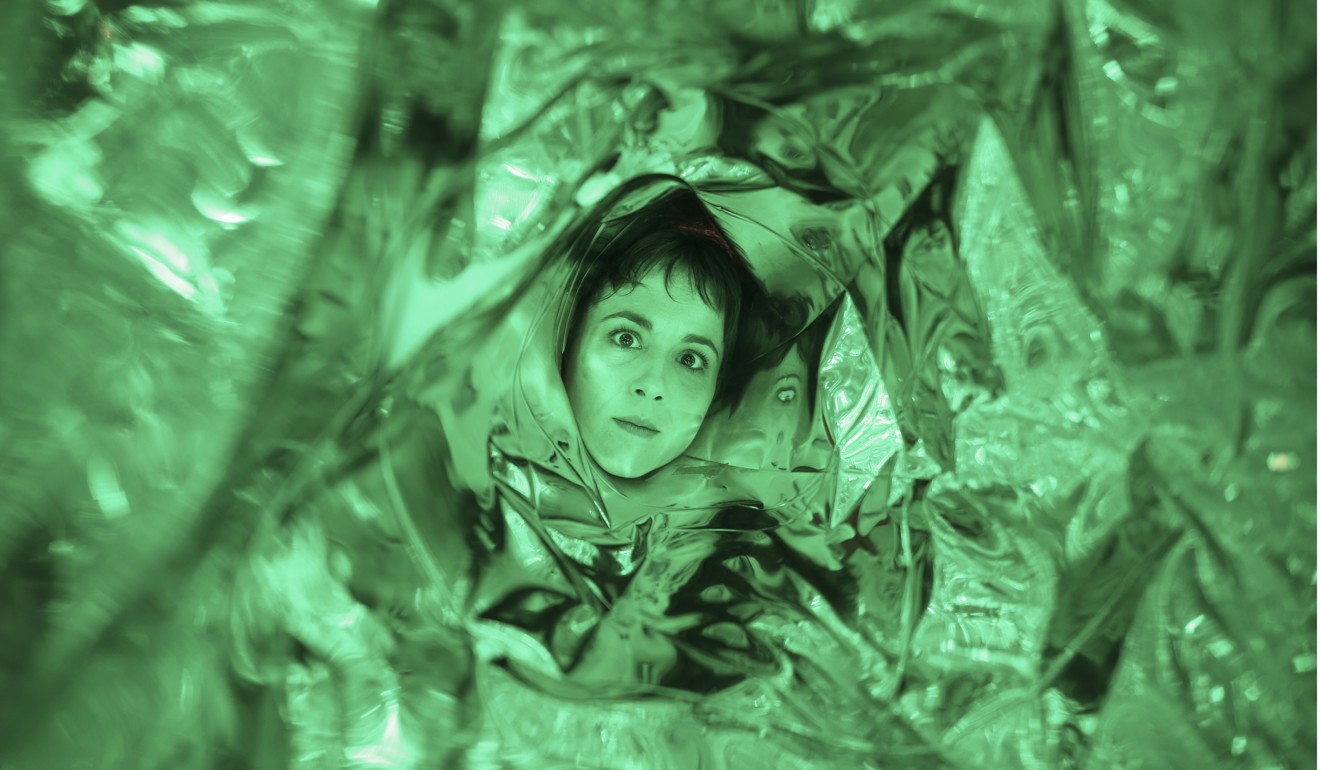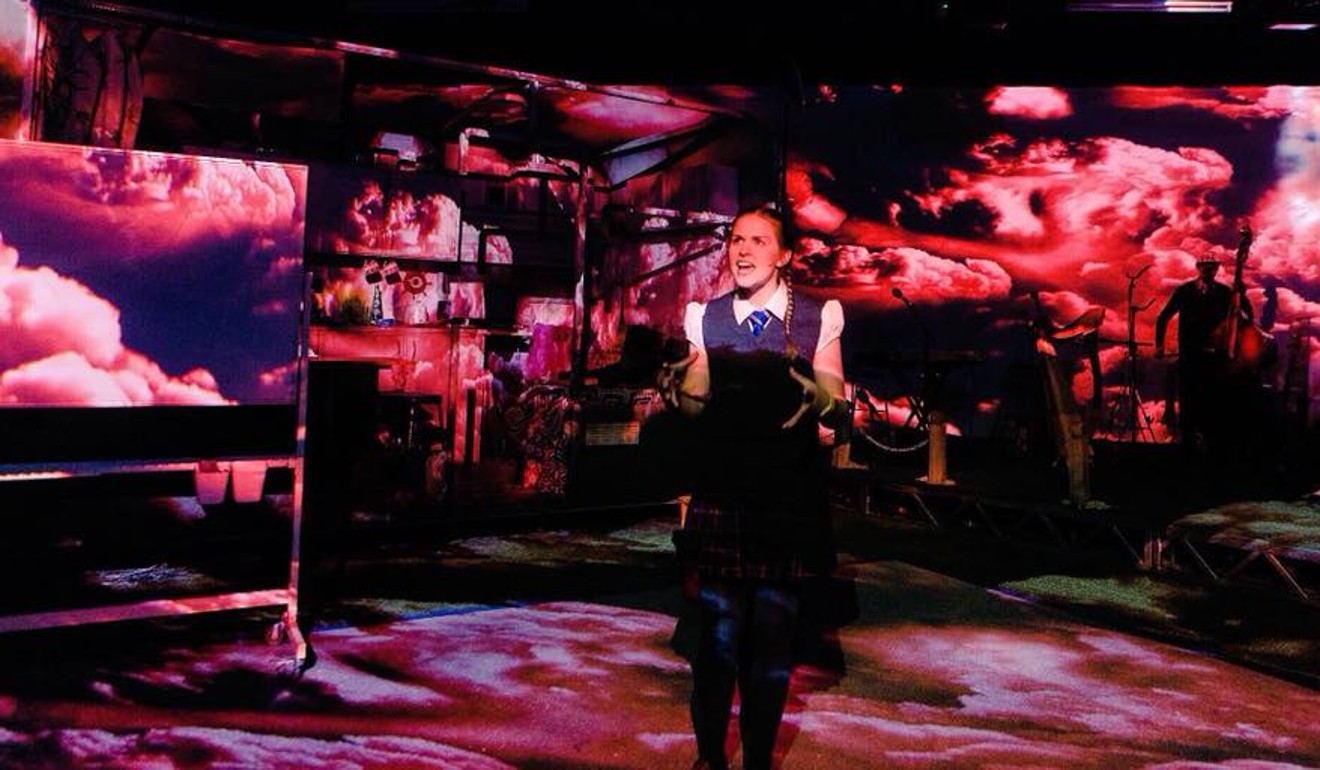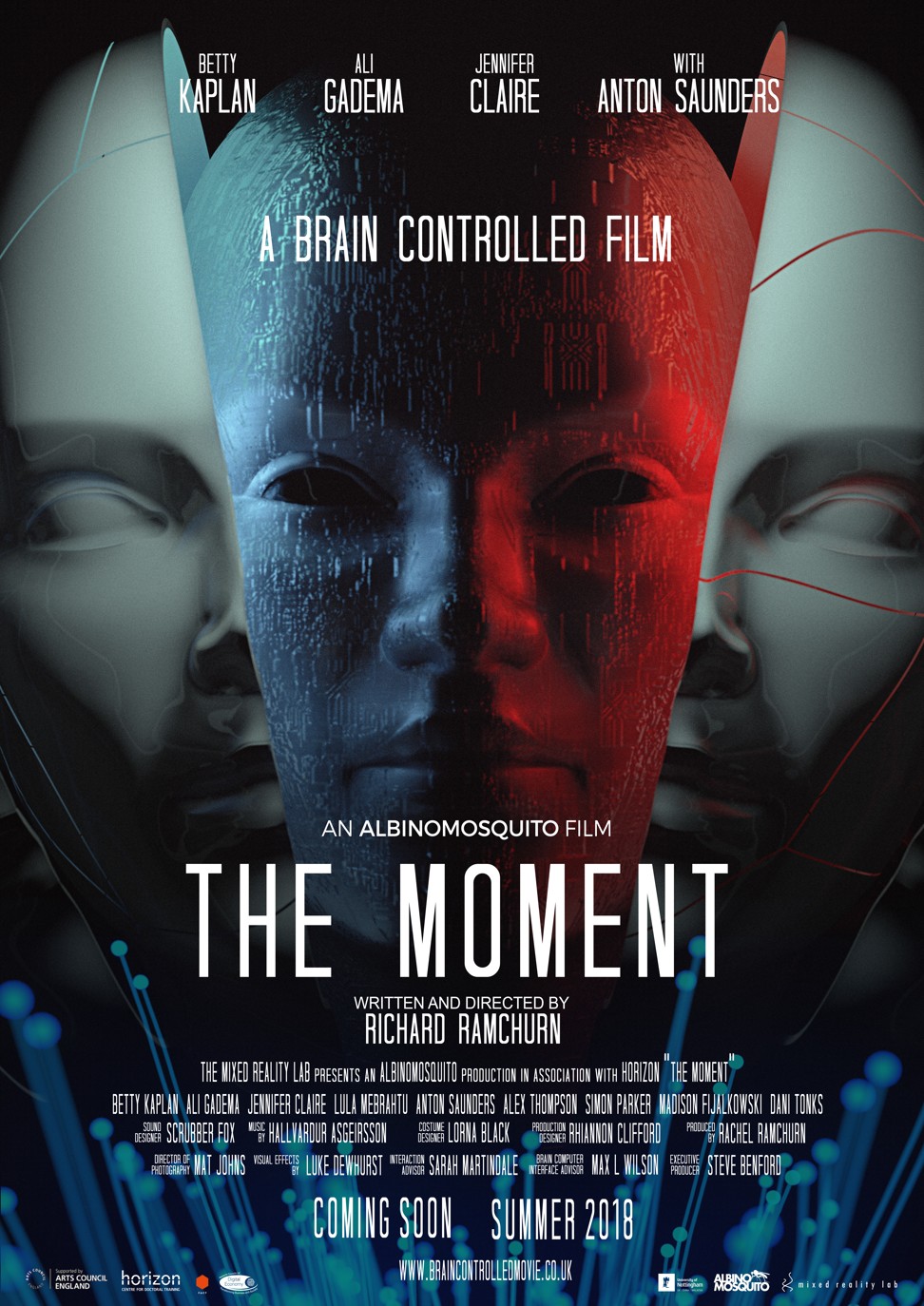
Art and science merge at Hong Kong festival: mind-controlled movies, artificial typhoons and musical biology
- Three-day event includes a film that changes scenes to match audience brain activity and a play about storm-chasing with artificial storms
- Artists are important in imagining future uses of new technology, festival collaborators say
Can you imagine going to a movie and having the power to determine how its plot will play out by just thinking about it?
It may sound like science fiction but it is already possible.
From moon landing to AI, the year ahead in Chinese science
“Mind-controlled movies” are just one of the highlights of the upcoming Spark festival in Hong Kong, a three-day event organised by the British Council that celebrates creativity in science and the arts.
Other highlights of the festival, which will take place in Central district’s prison-turned-cultural-hub Tai Kwun, include a stage production that features real miniature typhoons, and a music performance accompanied by biological cells “dancing” on a screen.

The mind-controlled movies are the creation of Richard Ramchurn, a graduate of the University of Nottingham in the UK and a collaborator at the festival. Using electroencephalography devices that detect electrical activity in the brain, he has adopted the technology to detect how much attention a user is paying to something.
At the festival, each small screening of The Moment, a 27-minute feature directed by Ramchurn, will see one audience member don an electroencephalogram (EEG) device. Scenes from the film will change in accordance to the brain activity detected.
The movie explores the concept of how the very technology Ramchurn is creating could go wrong in a dystopian future where brain-computer interfaces are a normal part of society. “New science and new technology is like an unknown language – nobody really knows what it is capable of or how it will be exploited,” Ramchurn says.

He explains that artists have a role to play in understanding how technology could be used in the future.
“Artists are the guys who have the imagination to see something, see its potential and think outside the box about what it might do and then make these insane experiences into beautiful pieces of work that engage the imagination of the public to show what could be possible.”
Despite the separation of the arts and science that persists to this day, Susannah Morley, director of Spark, says the two fields are increasingly influencing each other and merging thanks to modern technology.
“When we were developing the idea of Spark, we had this conversation about how at the beginning of the industrial revolution we had this change in perception that the sciences became much more narrowly focused, and there was this separation between arts and sciences,” she says. “Maybe we are beginning to reclaim the idea that one person can be creative in the way that we understand artists in the 19th or 20th century to have been creative, but who can also push the boundaries of knowledge [like] we perceive scientists do.”

In another event at the festival, Geinor Styles, artistic director at Theatr Na Nog in Wales, whips up an artificially created tornado in her musical play Eye of the Storm.
The miniature tornado is created by an atmospheric vortex machine invented by Canada-based engineer Louis Michaud, who believes the machine has the potential to one day provide clean energy.
The play blends arts and science and focuses on main character Emmie, who aspires to chase storms.
“We’ve used the idea of the atmospheric vortex engine, and that is down to the story and what drives the character,” Styles says. “I think the new technologies that are coming soon – and are in existence now like virtual reality and augmented reality – are enabling a broader audience to access art, which I think is absolutely fantastic.”


Styles, who has been working on plays for the past 20 years, says that it is important for young people to understand how the arts and science influence one another. She explains that when she reached out to Michaud for permission to use his invention in the performance, which is designed to inspire children’s interest in science, he was “over the moon about the fact that his idea was going to be used in a musical”.
Dan Lloyd, professor and deputy head of the school of biosciences at the University of Kent in England, is also working on a way to merge the arts with science with the audiovisual performance Cellular Dynamics.
In the collaborative project with Daniel Harding of the university’s music department, images and videos of cutting-edge microscopic work done by Lloyd and his team are embedded within performances of classical music.
“We’ve got some really nice intersection between what is happening artistically and what’s being presented scientifically,” Lloyd says. “That has been a really interesting process where I feel much more part of the fabric of the artistic process as well as the scientific one.”
I think now more than ever, the public needs to have a stake in how things are developed. It is the public who say yes or no to [new tech] being ubiquitous
“I love the idea that [audiences] go home and they’re asking questions about science and they’re wondering what they saw and they’re inspired, and sometimes moved by what they’re seeing,” he says. “[These things] are happening in my body at this time, at such a microscopic level, and it is being presented there as a visual accompanied by this music. That is my inspiration – that people go home and develop this questioning culture.”
Lloyd says that it is important for the public to be engaged with the scientific community so that they understand where science and technology are heading – whether that be in a controversial or beneficial direction.
“It is important to inspire the next generation because science and technology is really important. We need to ensure that it is sustainable and we need all of those things that have a role in solving the many global problems that we are faced with and will continue to be faced with.”
Taiwan has got it right on AI and data, can Hong Kong follow?
Ramchurn says that every technology can be exploited for good or bad, which is why his work as a scientist and an artist involves showing that potential to people who will eventually be affected by it.
“I think now more than ever, the public needs to have a stake in how things are developed. It is the public who say yes or no to something being ubiquitous,” he says.

He adds that there are significant benefits to further developments in brain-computer interfaces in relation to the arts and creative spaces that will ultimately affect everyone if successful. In terms of art, for example, someone could imagine anything – including their dreams – and it would appear on screens instantly.
“The change will make mobile phones seem like small potatoes,” he says. “It is going to really change your consciousness and how we relate to the world. It will make us able to access information instantly, which just expands our cognition.”
Spark: The Science and Art of Creativity, Tai Kwun Centre for Heritage and Arts, 10 Hollywood Rd, Central, January 18-20. Open 10am to 11pm, Monday to Friday.

